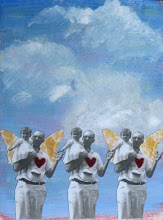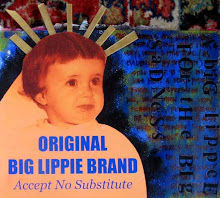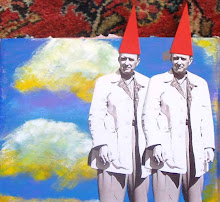 David and I got home late this evening and as per habit, he turned on the TV to unwind for a bit, and after scanning through a few channels, he settled on The History Channel (a good choice) and it was midway through a segment of what was probably a really cool show, though we had missed most of it. Normally, I wouldn't have even given the show more than a second's glance, not because I don't enjoy a good documentary (I do), but because the show was nearly over and I hate not seeing anything from the beginning. But this was very interesting and I found myself dropping to the chair, riveted to the screen.
David and I got home late this evening and as per habit, he turned on the TV to unwind for a bit, and after scanning through a few channels, he settled on The History Channel (a good choice) and it was midway through a segment of what was probably a really cool show, though we had missed most of it. Normally, I wouldn't have even given the show more than a second's glance, not because I don't enjoy a good documentary (I do), but because the show was nearly over and I hate not seeing anything from the beginning. But this was very interesting and I found myself dropping to the chair, riveted to the screen.Apparently there is this husband and wife, James and Cynthia Andela, who both hold degrees in engineering and who invented a machine that pulverizes glass. The machine has a series of hammers within its main turbine which is shaped like a long cylinder, and the glass makes its way through this tube starting at one end as bottles and dishes, etc, and comes out the other end smashed to bits to one degree or another. The machine sorts the refuse to remove the garbage and to be sure that like is being demolished with like and is even capable of separating the glass by color as well. Even the inside of the machine was a work of art: the hammers were handmade on a metal lathe that was over seventy years old and was found on a decommissioned warship.
Depending on where the degree of destruction is set on this machine, it can pound the glass into what looks like smooth, colored pebbles or glass so fine it's smoother and softer than beach sand. One woman said she uses the larger glass pebbles as mulch in her gardens because the machine has softened the glass like the ocean makes beach glass from our litter, worn down and smooth to the touch, but colorful and beautiful as it catches the light from the sun. It looked as though the earth had become a kaleidoscope around her flowers. The finer glass is used to sandblast metal objects, and is also used in concrete and even paints, but the larger glass, which is about 3/8 of an inch is amazing to behold.
There were endless shots of huge vats of glass in pebbles no bigger than my fingernail all sorted by color. Vast piles of blues and greens, clear glass and whites with some yellows mixed in, and reds, oranges and browns all mingling together. It was absolutely breathtaking to behold and all I could think was how much I wanted to be there in person to see all those amazing colors making prisms in the light and run my fingers through it all. Depending on the size of the machine, each pulverizer can process between one and twenty tons of glass per hour. Just imagine what that much luminescent glass looks like separated into groups of dazzling color.
This couple have also made a larger glass hammering machine to break down toilets and sinks, as evidenced by the huge piles of milky white porcelain that were shown, and even a machine to pulverize old car windshields (this was not as exciting to me). The toilet chomper though, made me think of how many pieces of everyday porcelain and fine china I have found digging in my gardens, objects broken and no longer useful and buried so long ago here on my property. I am always excited when I find a piece and wonder who the people were who used them, but to see tons of it on TV all made small and smooth was amazing.
The eco-friendly green girl in me is thrilled when I see innovations that allow us to recycle and reuse formerly useless objects, or even garbage, in new and exciting ways, and while I know this glass pulverizer is a purely industrial application, the artist in me is just thrilled to think of all that color, all that light, all that beauty in one place.




